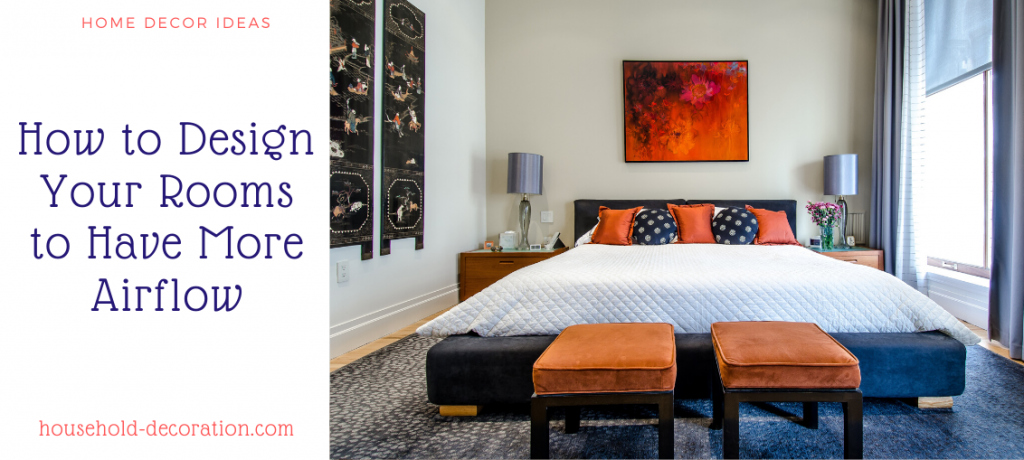A well-ventilated room is like a rushing stream of cool water. As water rushes through a stream, contaminants are taken away, resulting in cleaner water that is more hospitable to various aquatic lifeforms. As air rushes through a well-ventilated room, contaminants are removed, as well. In addition, the temperature is much easier to regulate, ensuring it is comfortable for those who live in your home. To help improve the airflow in rooms, here are a few ways you can design them to have more airflow.
Add Windows
While a single window in each room can provide plenty of fresh air and a necessary escape route in the event of an emergency, to increase the airflow in a room, at least two windows are needed. In a two-window setup, air is drawn in one window and drawn out the other due to convection. This air movement creates a natural breeze and constantly replaces the air in a room. With the other added benefits of extra windows, such as more natural light, adding extra windows can make a great option for any room.
Add a Fan
A ceiling fan is a great way to improve the airflow in a room. Even when a room is entirely closed, a ceiling fan helps to circulate air, drawing in fresh air from the rest of the home. If a window is open in a room, the ceiling fan helps draw in fresh air from outside and helps to stir the air to allow old, stale air to leave the room, even if there’s only one window. Of course, a fan can also help decrease the felt temperature in a room, creating an energy-saving addition that makes a lot of sense.
Position Vents Correctly
When a room is first designed, one of the aspects you’ll really want to pay attention to is the proper placement of the vents in that room. Proper vent placement ensures that the vents won’t be in a location that can easily be covered by furniture or other decor. Companies providing air conditioning services can help in the placement of your vents, as they are knowledgeable in the ways that the placement of vents can affect the comfort of a room. For rooms that have already been ventilated, experiment with rearranging furniture to allow easy ventilation and airflow.
Remove Walls
While some walls in a home are certainly necessary for privacy and support, the fewer walls you have, the better the air will flow throughout your home. If you work hard to create an air current in a room, it can quickly be stopped if it meets an unnecessary wall. Therefore, do all you can to design your home, especially common areas, without any more walls than are absolutely necessary to maintain the structural integrity of your home.
Health and Money Savings
Two big benefits of increasing airflow in your home are improved health and increased money savings. You can improve your health by keeping fresh air in rooms instead of air that’s full of germs that other people have left behind. You can increase money savings by regulating the temperature of your rooms without needing to run your HVAC system as often. These benefits alone are more than worth the effort it takes to design your rooms to have more airflow.
Brooke Chaplan is a freelance writer and blogger. She lives and works out of her home in Los Lunas, New Mexico. She recommends looking into air conditioning services near you. She loves the outdoors and spends most of her time hiking, biking, and gardening. For more information, contact Brooke via Facebook at facebook.com/brooke.chaplan or Twitter @BrookeChaplan
Note:
Homeinside.net is providing an opportunity to provide guest posts on its platform. If you have good writing skills or want to contribute on some good topics like Write for us Home Decor, Home Improvement, Home Renovation Ideas, House Designs Plans, Kitchen, Home Office, Remodeling, Bathroom, Plumbing, Interior Design, Architecture, Real Estate, Bedroom, Solar, Furniture, Maintenance, Walls, DIY, gardening then you are on the right side.
Home Improvement Blog Write for us
